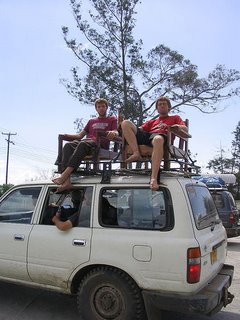Safwa Homestay Ethnography: Introduction
Chemani Nsyile speaks Kisafwa; he lives in a small mud-brick, sheet-metal roofed house with his wife and young child. Thirty yards up hill, in the house where he was born, lives his mother. His brother lives another thirty or so yards further, and so on. He was born to a Safwa mother and father, married a Safwa wife in the Safwa custom, and speaks Safwa with his friends, who are his neighbors. Though this project began as an ethnography of the Safwa people, it was through Chemani, my host, guide, language teacher, and friend through the course of an eight-day homestay, that I was introduce to the Safwa. It is as much his story, and the story of his family, as it is ethnography; all that I know about the Safwa and their way of life I learned through him and his interactions with his friends. .
My first encounter with Chemani and his family was at church; we sang Swahili worship choruses, prayed, and were introduced to our host families. It’s important to understand that as a culture the Safwa of the Mbeya region are, for the first time in memory, becoming religiously divided. So while we were learning about the Safwa culture, we were learning about a culture primarily from contacts in the Christian community, viewing their own culture from the view point of being both Safwa and Christian, having made changes in their traditional way of life in order to call themselves Christian Safwa.
After the church service and introduction, we started hiking; we had already pushed the limits of the Land Cruisers on the access road; now we were well beyond the domain of powered vehicles. The Safwa are scattered in homesteads across the highlands of Mbeya; it’s hard to take a step in any one direction without significant elevation change. Houses are built on small plateaus carved out of the mountainsides by hoe, and everything rises and falls and twists and turns in an immense network of hills and valleys that cannot be described with the terms gentle or rolling. Everything—farming, walking, chatting, herding cows—is done at a fifty-degree angle or higher. So we climbed, then descended into a narrow valley, climbed out and around another hill, followed a narrow watercourse at the bottom of yet another valley, and finally ascended to Chemani’s house, perched overlooking the valley on a piece of land cut and leveled out of the mountainside by hand. We had arrived.

